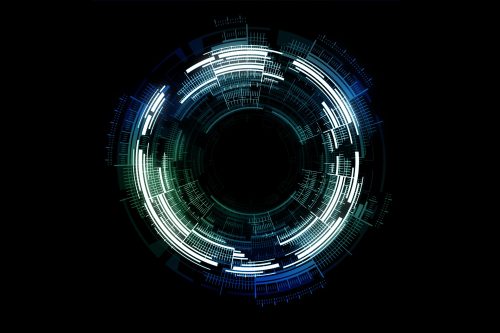
“The Future of IT” is a rather lofty subject and one that you will have to give me a bit of leighway to “stargaze” a little!
It’s a difficult subject to approach because none of us can accurately predict the future – but there are some general trends which i think points us to where IT could be heading over the coming few years.
Artificial Intelligence (AI) and Automation
It is in human nature to strive for “making our lives easier” and especially since the industrial revolution, automation has been on a never-ending exponential increase. Automation via AI is the next big development in my view and just in mid March of this year, Microsoft announced their new “Co-Pilot” AI service would be embedded in the Microsoft 365 software service shortly. Microsoft Co-Pilot will potentially be able to create reports for you from a rough set of notes, priororitise your email inbox and much more. It are these “mundane” tasks that i believe will eventually be taken away from humans and will be completed by AI software.
You may even be familiar with AI yourselves. Have you heard of ChatGPT? This, currently free, service allows you to have human-like conversations and much more with the chatbot. The language model can answer questions and assist you with tasks, such as composing emails, essays, and detailing historical ideas and theories.
I believe AI will also impact a great deal of other areas. For example, if you are a computer programmer, gone will be the days of people slaving over writing line and line of code – AI like ChatGPT (detailed above) can already do elements of this for you and i believe this will only grow.
Ex Microsoft CEO Bill Gates, just in the last few weeks, has claimed that AI is the most important technical advance in decades and has compared it’s potential impact to the birth of the Internet. I don’t disagree with this statement.
Internet of Things
The Internet of Things (IOT) is actually already here but i think this will only grow over the coming years. Millions of home devices such as smart cameras, lights etc are already connected to the “Internet of Things” and i believe this will continue into more of our home and business life. For example, smart cameras equipped with vision processing units (VPUs) can analyze video feeds in real time to “see” what’s happening at a busy event venue or even your own home. This is only 1 example, but other areas where I believe IOT will impact is things like healthcare (with the adoption of smart devices in the home), transport (smart cars, traffic routing etc), warehouse management (remote monitoring) and smart cities and buildings (predictive maintenance etc).
Information Security
Today’s IT teams are facing a sophisticated generation of cybercriminals. With new connected devices being added to corporate and home networks, there are a growing number of potential entry points to target. Over the next few years, all of us, will be forced to employ a variety of techniques to help to deal with these cyber criminals. Whether it is using multi-factor authentication on our cloud accounts, the use of advanced anti-ransomeware software or physical firewall devices on our networks – we will be forced to employ greater tools to allow us to cope with this threat.
Cloud Infrastructure
The days of every mid to large organisation having physical servers in their offices is coming to an end. More and more organisations are moving most of their infrastructure to the cloud (such as their ability to log in to office networks etc) and i believe this will continue to grow over the next few years. Hybrid environments (where you have a mixture of physical and cloud infrastructure) and virtualised environments (where you have server style services hosted elsewhere) will also continue to grow where there is still a need for applications to be provided to staff.
Other elements on the horizon
The 4 areas above, in my view, are the key ones but there are others too. Elements like 3D printing and Virtual Reality are also things that i can see a future for. The ability for all organisations to be able to make items from 3D printing or to use Virtual Reality to help user experiences could be vital in the coming years.